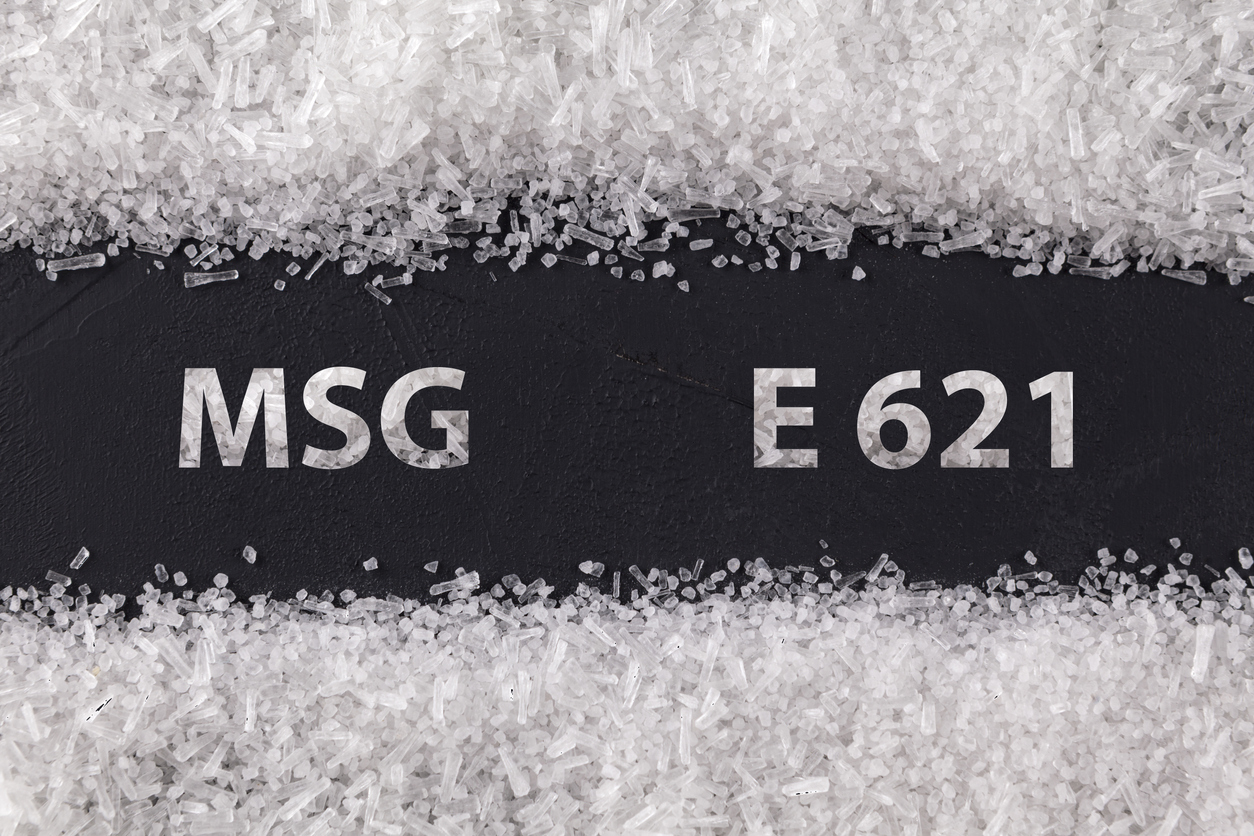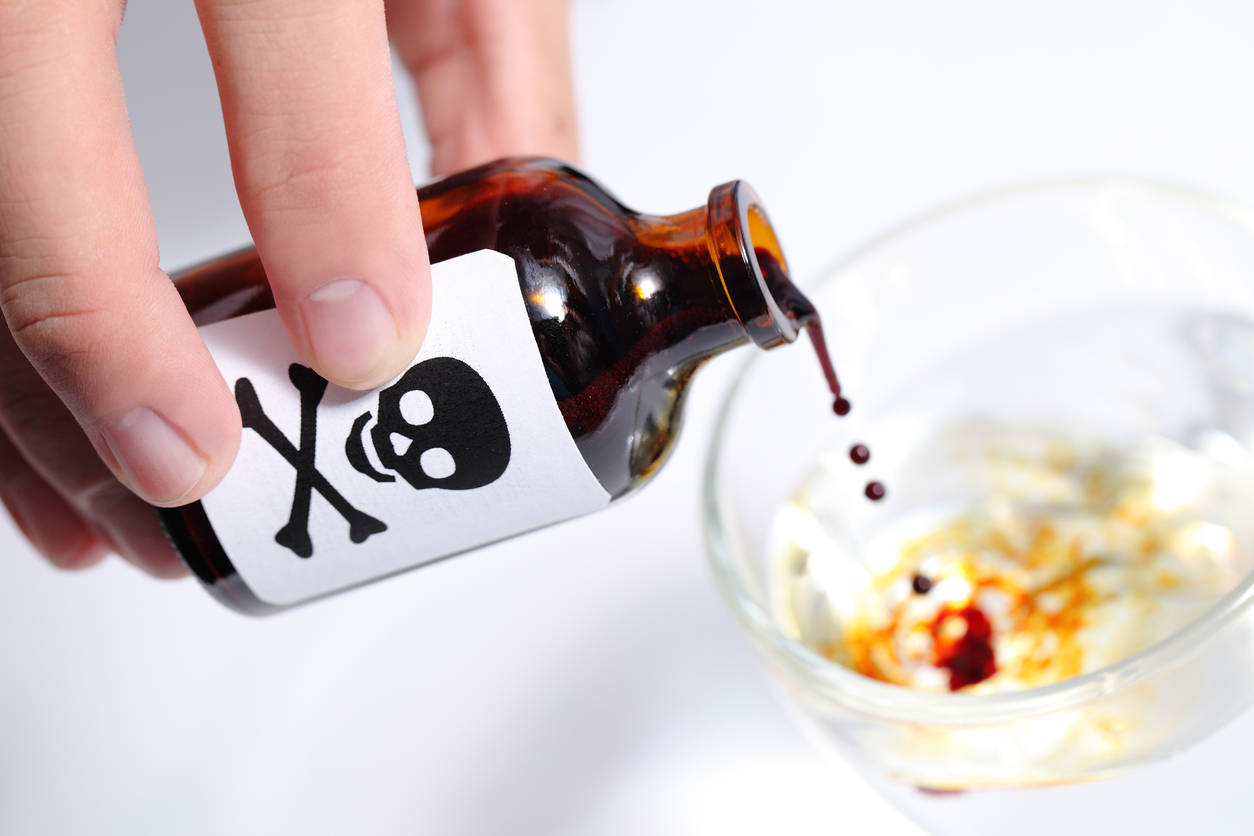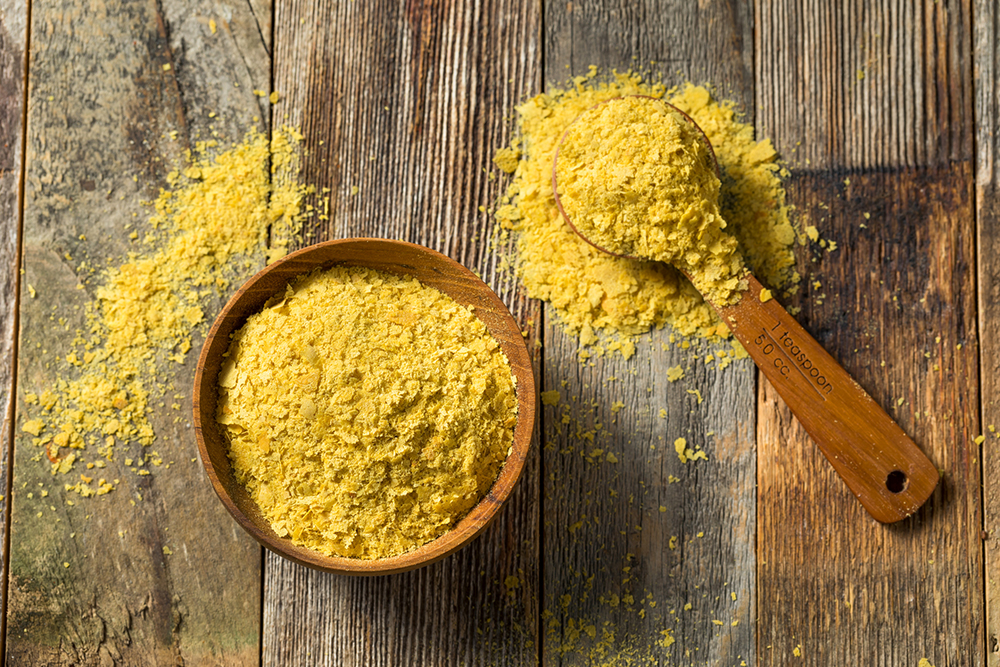In general…
Free glutamic acid, a.k.a. free glutamate (FG), the brain-damaging component of MSG can be used (and hidden) in processed foods, dietary supplements, cosmetics, personal care products, pharmaceuticals, and the food that is given to pets and other animals. It can be used in waxes applied to fresh fruits and vegetables. It can be used in ingredients used in pesticides, fungicides, fertilizers, and plant growth enhancers — remaining in the edible portion of the plant or on the edible portion of the plant when its leaves, fruits, nuts, grains, seeds, and other edible parts are brought to market.
There are over 60 food ingredients besides “monosodium glutamate” that contain processed free glutamic acid (FG). Each, according to the FDA, must be called by its own, unique, “common or usual name.” “Autolyzed yeast,” “maltodextrin,” “hydrolyzed pea protein,” and “sodium caseinate” are the common or usual names of some ingredients that contain FG. Unlike the ingredient called “monosodium glutamate,” they give the consumer no clue to the fact that there is FG in the ingredient.
In addition to ingredients that contain FG, some acids and enzymes when combined with a food that contains protein will produce FG. The words “enzyme” and “protease” (which is a type of enzyme) signal the presence of enzymes capable of causing the production of FG.
In particular…
– Low fat and no fat milk products often contain milk solids that contain FG. Other dairy products often contain guar gum and/or locust bean gum. Low fat and no fat versions of ice-cream and cheese may not be as obvious as yogurt, milk, cream, cream cheese, cottage cheese, etc., but they are not exceptions.
– Protein powders and protein drinks contain FG, and the FG in the protein powders and drinks will always be processed (manufactured), i.e., will always contain processed FG. Individual amino acids are not always listed on labels of protein powders and drinks.
– When this was written, there was an FDA requirement to give the name of the protein source when listing hydrolyzed protein products on labels of processed foods. Examples are hydrolyzed soy protein, hydrolyzed wheat protein, hydrolyzed pea protein, hydrolyzed whey protein, hydrolyzed, corn protein. If a tomato, for example, were whole, it would be identified as a tomato. Naming an ingredient “tomato protein” indicates that the tomato has been hydrolyzed, at least in part, and that processed FG is present.
– At one time, and maybe still, the FDA required disclosure of ingredients labeled “monosodium glutamate” and “hydrolyzed…protein” when, as ingredients, they are used in “flavor” or “flavoring” (whether or not the “flavor” or “flavoring” is preceded by the words “natural” or “artificial”). However, “flavors” and “flavorings” can contain FG in ingredients other than “monosodium glutamate” and “hydrolyzed…protein” without the name of the FG-containing ingredient being disclosed.
– Disodium guanylate and disodium inosinate are relatively expensive food additives that work synergistically with inexpensive FG. We believe they would only be used if there was already FG in the product.
– FG will be found in some soaps, shampoos, hair conditioners, and cosmetics, where FG is hidden in ingredients, often with names that include the words “hydrolyzed,” “amino acids,” and/or “protein.”
– Binders and fillers for prescription and non-prescription medications, nutrients, and supplements, may contain FG.
– Enteral feeding materials, and some fluids administered intravenously in hospitals, may contain FG.
– According to the manufacturer, as this was written, Varivax–Merck chicken pox vaccine (Varicella Virus Live), contained L-monosodium glutamate and hydrolyzed gelatin, both of which contain FG. It would appear that most, if not all, live virus vaccines contain some ingredient(s) that contain(s) FG.
– There are a number of ingredients identified as organic that, organic or not, will contain FG. Autolyzed yeast, yeast extract, textured soy protein, and anything hydrolyzed are examples of ingredients that may be made from organic produce but will never-the-less contain FG.
– Drinks, candy, and chewing gum are potential sources of hidden FG. They may also contain aspartame, neotame, Equal, or AminoSweet (one of the newer names for aspartame). We mention aspartame, neotame, and AminoSweet here because they, like MSG, contain a neurotoxic amino acid, and can cause the same reactions that MSG causes.
– Aspartame will be found in some medications, including children’s medications.
– Some waxes used on fruits and vegetables contain FG.
– Anything that breaks down the protein in a product can produce FG as it breaks down that protein. There have been reports of people reacting to meat wrapped in Cryovac.
Cryovac is a registered trademark for a thick plastic in which meat is sealed with the air removed by a vacuum pump. The word Cryovac is also used for the thermoplastic resin wrapping film which can be heat-shrunk onto foods.
– Produce may have been produced using fertilizer or pesticide products that contain FG. Some of these fertilizers may be organic. It is impossible to know from looking at produce whether or not it has been treated with an FG containing fertilizer or pesticide product that leaves residue in or on the produce.
– Some non-organic waxes used on some fruits and vegetables contain FG.
– Additional sources of FG include infant formula, kosher food, enteral feeding products (tube feeding products), dietary supplements, pharmaceuticals, protein drinks often recommended for seniors, protein bars and protein powders, vaccines, personal care products, protein powders sold in health food stores, food that is labeled “organic,” wine, food with labels that say “No Added MSG,” “No MSG Added,” or “No MSG,” food that is falsely advertised as containing no MSG, and in food whose manufacturers claim, in response to questions, that their products contain no MSG.
– FG can be hidden by restaurateurs who claim that the food they serve contains no MSG.
About “organic” products…
Where MSG is concerned, “organic” doesn’t mean “safe.” Ingredients like organic autolyzed yeast and organic natural flavoring have just as much FG in them as those not called “organic.” Following are two products labeled “organic” that were brought to our attention as containing FG. There are others.
Product: Vegetable Bouillon
By: Morga
Ingredients include: Yeast extract; Maltodextrin
Product: Macaroni & Cheese Dinner
By: Simply Organic
Ingredients include: Natural flavors; Autolyzed yeast extract
Also listed as organic are fertilizer products that contain hydrolyzed fish protein and hydrolyzed chicken feathers. All hydrolyzed ingredients contain FG.
About “Health Food” stores…
Health food stores are mine fields for FG. Protein powders are generally nothing more or less than hydrolyzed proteins – and will contain all three manufactured neurotoxic amino acids: glutamic acid, aspartic acid, and L-cysteine. Food labeled “organic” cannot legitimately contain monosodium glutamate, but can contain other ingredients that contain FG. Dietary supplements will often contain individual amino acids (because they can be absorbed by the body more quickly than amino acids found in protein which have to be digested before they can be absorbed); and if dietary supplements contain individual amino acids, those amino acids may be neurotoxic glutamic acid, aspartic acid, and/or L-cysteine, all manufactured in food and/or chemical plants.
These are the names of some of the FG-containing ingredients often found in Health Food stores:
amino acids (They almost invariably contain glutamic acid.)
autolyzed yeast
citric acid
glutamate
glutamic acid
hydrolyzed protein
monopotassium glutamate
monosodium glutamate
protein
whey protein concentrate
There are also chelates. Minerals found individually and in some multi-vitamins, are usually joined to amino acids for better absorption, i.e., the minerals or multi-vitamins are chelated. The following are names used for chelates that will contain FG and/or aspartic acid and phenylalanine which are two of the main ingredients in MSG’s toxic cousin aspartame:
amino acid chelate (chelated with amino acids)
potassium (or any other mineral) citrate
potassium (or any other mineral) aspartate
potassium (or any other mineral) glutamate
chelated with hydrolyzed protein,
chelated with protein
chelated with amino acids
Some supplement manufacturers place asterisks after the names of minerals. Below the list of ingredients, the asterisk is often followed by a note that explains that the mineral is “chelated with hydrolyzed protein,” “chelated with protein,” or “chelated with amino acids.”
Protein powders are all the rage for body builders and older people. The main ingredient is typically a hydrolyzed protein — and hydrolyzed proteins contain FG, excitotoxic aspartic acid (found in aspartame), and excitotoxic L-cysteine (found in some dough conditioners). We have concern for anyone who ingests any form of FG in his or her diet. We have extreme concern for athletes who ingest FG just prior to, just following, or in the course of vigorous exercise, because there is evidence that the adverse effects of FG may be intensified by vigorous exercise. Heart irregularities have been known to be caused by ingestion of FG and/or aspartame. Heart irregularities can result in cardiac arrest.
About hospitals, nursing homes, and extended care facilities…
The most common sources of FG in hospitals, nursing homes, and extended care facilities will be:
-Soups – even if the institution purchases soups and/or soup bases that claim to be MSG-free
-Protein drinks such as Boost and Ensure
-Enteral care products – used when tube feeding
-Gelatin
-Gravies
-Salad dressings
-Intravenous solutions. Reactions have been reported to saline solution and solutions containing dextrose. Ringers solution appears to be (or at one time appeared to be) FG-free.
-Anything no fat or low fat
-Anything made with a sugar substitute likely contains neurotoxic aspartame, Equal, or AminoSweet.
People with extreme intolerance to FG have difficulty with pharmaceuticals that contain FG in the binders and/or fillers. They may also react to the starch on powdered gloves and/or the contacts that are glued to a patient’s chest for heart monitoring. The contact points that touch the body may contain guar gum which, after several days’ exposure, may cause adverse reactions.
About pet food…
It’s not only humans that have problems with FG. The first evidence of FG toxicity came from animal studies, some of which demonstrated that animals suffered brain lesions and endocrine disorders when fed monosodium glutamate. The possibility that your animal is sensitive to FG is certainly worth considering. We have received the following from consumers:
Subj: Pet Food & MSG
Date: 8/17/2004 1.48:20 AM Central Standard Time
Dear Folks, would you consider adding an article on MSG in our Pet Food. Just about all the grocery store dog food and most of the canned cat food has various products with an msg base. What can we do about this??? Our pets are much smaller than we are and surely this is extremely bad for their small frame. God help us all. Also, how about my favorite ice cream which is Haagen Daz. I eat the simple flavors, Vanilla, Chocolate, Butter Pecan. I eat it because the original flavors are cream, skim milk, vanilla, chocolate. Anyways, thank you for being here. God Bless your work. M.D.
_______________________
From: D
To: adandjack@aol.com
Sent: 1/24/2009 2:07:06 P.M. Central Standard Time
Subj: MSG
Our bichpoo dog (6 yrs) ate some sweet & sour pork (left over from Chinese take out). Almost immediately he began to exhibit hyperness, running& jumping, and almost seemed to be “high” on something. He seemed disoriented and didn’t settle down for almost six hours. The vet said he had never seen a dog show these symptoms from eating food. Could he be extremely sensitive to MSG or have you ever heard of this in an animal? Obviously no more people food for Buster. Thanks
Beyond MSG…
People who are sensitive to processed free glutamic acid (MSG), or those who simply would choose to avoid ingestion of toxic amino acids, need to know that there are two other neurotoxic amino acids commonly used in food: aspartic acid and L-cysteine. Aspartic acid is found in the sugar substitutes called “neotame,” “aspartame,” “AminoSweet,” “NutraSweet,” and “Equal.” L-cysteine is identified as L-cysteine and is most often found in dough conditioners.










